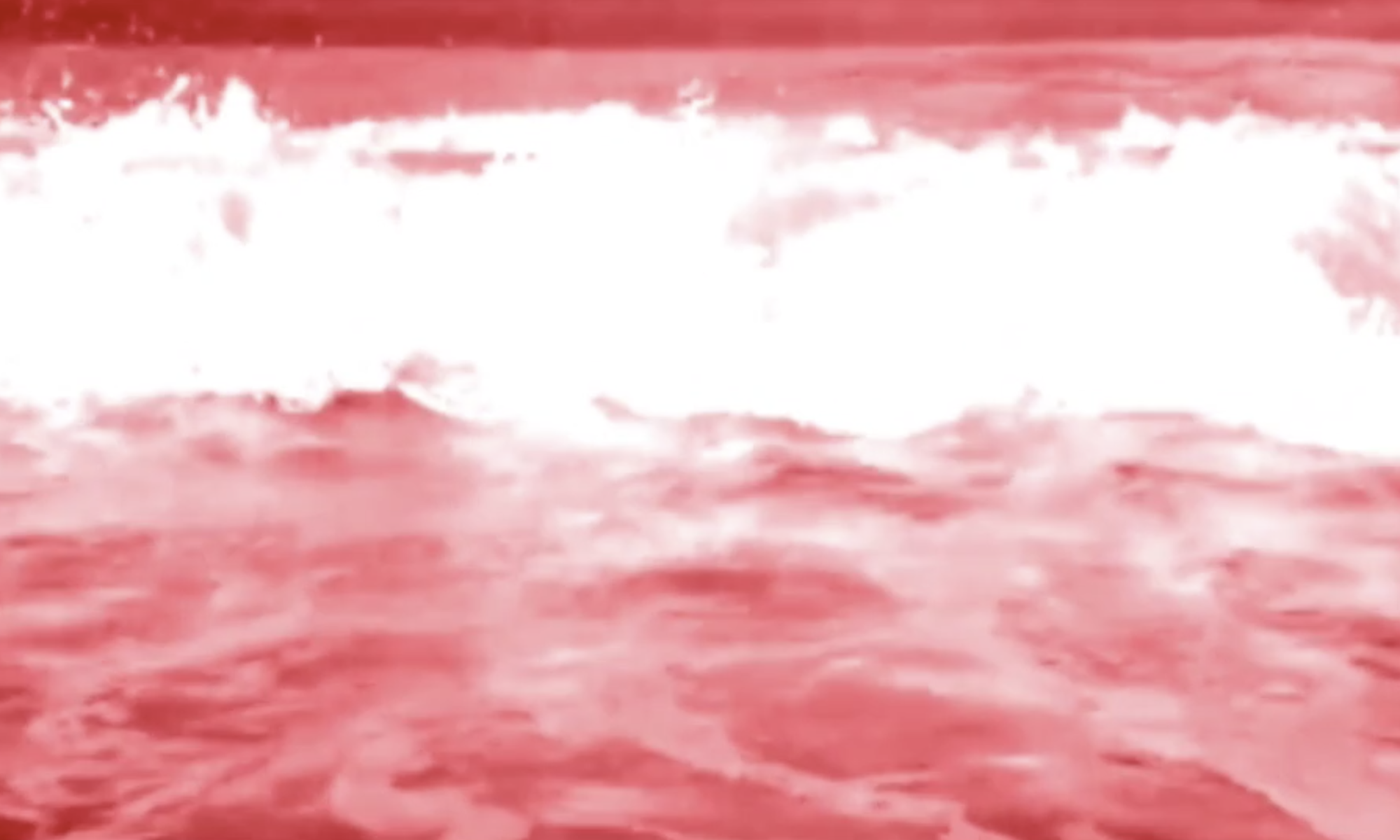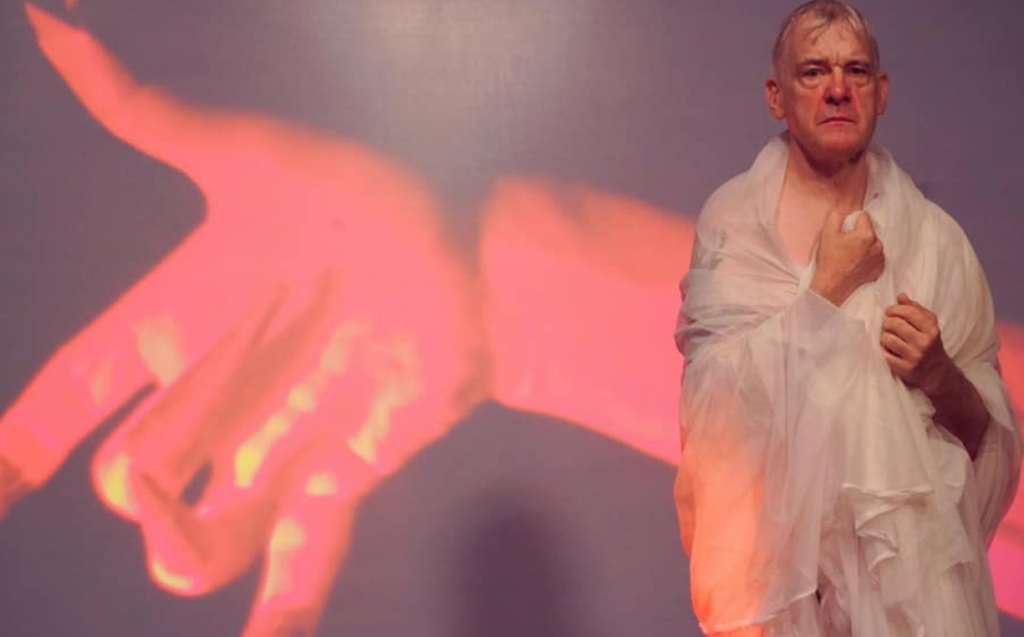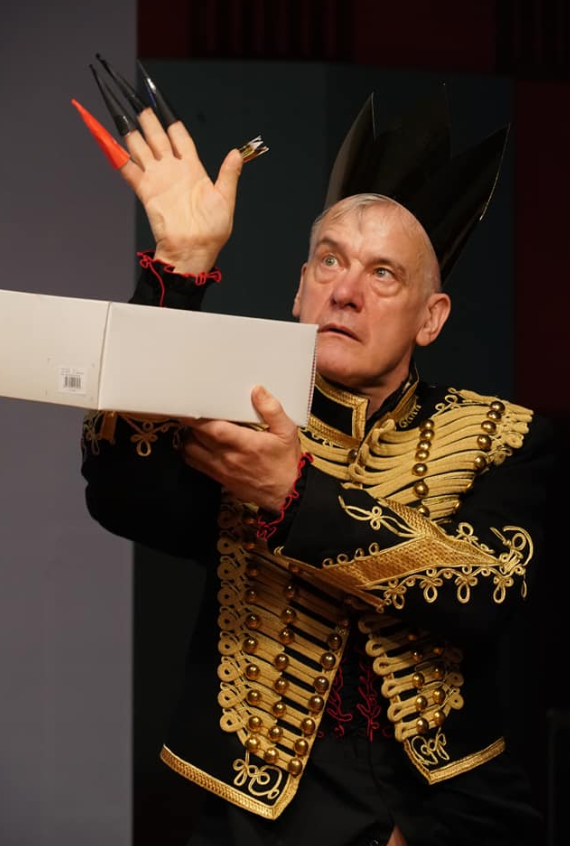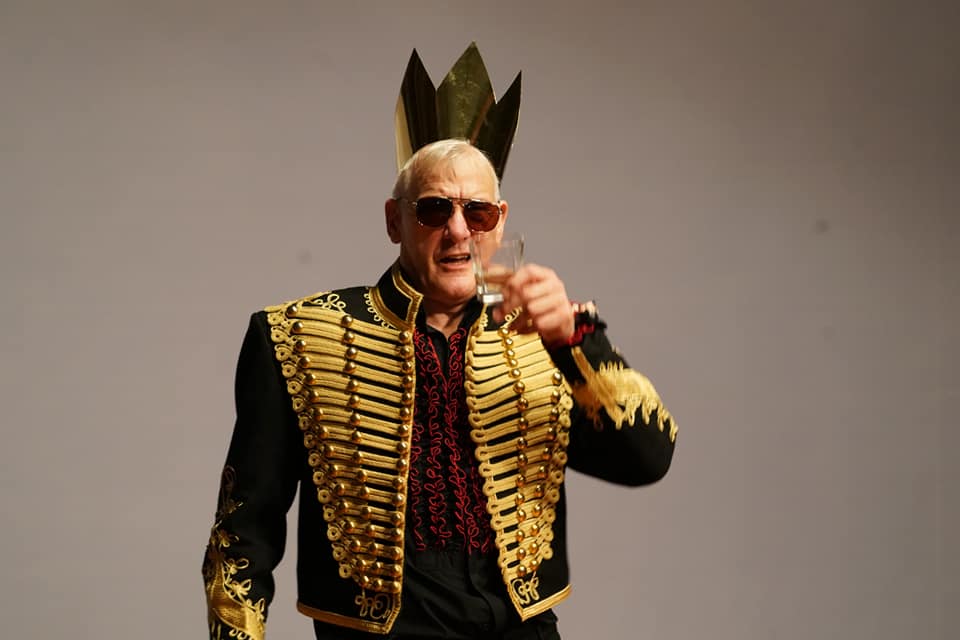Expanded Macbeth
Date: July 2019
Location: Shanghai Theatre Academy (China), IFTR
Format: live and augmented reality performance
Participants: Aleksandar Dundjerovic, Stephen Simms, Ian Wiliams, Maria Sanchez
External Funding: AHRC UK-China Creative Industries Partnership
Description:
Cycle five was part of an R&D project launched by AHRC UK-China Creative Industries Partnership and it was presented at IFTR 2019, Theatre, Performance and Urbanism in Shanghai. This was the next step that explored mixed media relationships between live performance and augmented reality. The key partners of this funded project were Centre for Interdisciplinary Performative Arts (CIPA), the Centre of Digital Media Technology (DMT), BCU, and Shanghai Theatre Academy (STA). The collaboration set up a platform for the development of more prominent practice research projects between performance/visual arts practitioners, researchers, artists, industry participants and associated creative businesses.
The project explores how augmented reality can be used as an additional devising tool in the process of creating a multimedia performance. The performance and visual arts experience of devising a multimedia performance based on Macbeth serves as material to explore a mix of live and augmented reality. Lady Macbeth was created as an avatar in augmented reality. The technical implications were discussed with collaborators from Shanghai, creating a platform for a future more significant development and a long-term collaboration between the two institutions and creative industries.
Research enquiry
How can we develop new ways of doing performative practices through mixed reality experiences, using live performing arts and augmented reality? What happens when we take Macbeth as canonical texts and transpose it combining performing and visual arts with new media technology and augmented reality?
Research background
The proposed project’s central theme is to explore a classical drama text (a case study of Shakespeare’s Macbeth) by using new media technologies to create an augmented reality experience. The creative experiences from Cycle 4 with designers at PQ19 provided an essential collection of images to build on a new Cycle 5. Besides, we experimented with Lady Macbeth’s character transposed to augmented reality, from the opera Macbeth by Giuseppe Verdi. Using the experience of augmented reality games, for iPhone and Android, the project explored possible ways to build on the themes and images linked to the text to create a live performance devised to instigate different audience experiences and cultural contexts. With augmented reality, using a phone that superimposes digital images over a real image on a phone camera, we investigated bringing audience participation and immersion to another communication level.
The augmented reality within the theatre/performance event will be a way of creating a different reality for the audience that will transform the real space into mediated circumstances. This will have a substantial impact on the way the narrative is communicated through a mixture of liveness and technology.
Methodology: mix-media and augmented reality
We are exploring different ways of using mixed realities as a performative tool employed in the creative process, experimenting with the elements of an augmented reality experience. By sharing best practice and exchanging knowledge with collaborators from the Shanghai Theatre Academy, the project will build on the strengths of both STA and Royal Birmingham Conservatoire in performance practice and creative industry research. Augmented reality will allow us to transpose Shakespeare’s world into reality. We will explore the gaming industry as a new way of relating fictional stories to relevant cultural narratives. The augmented reality within the theatre/performance event will be a way of creating a different reality for the audience. This will transform the real space into mediated circumstances and will have a substantial impact on the way the narrative is communicated through a mixture of liveness and technology. The project will look into developing research questions and opportunities for collaborations across a range of creative industry sectors: theatre, performing arts and new media, video gaming, visual and installation arts.
Outcomes and Evaluation
This cycle explored ways of developing activities through a workshop and symposium to examine the opportunities and challenges of a mix-media approach combining live performance and augmented reality.
A possible outcome for developing an augmented reality platform for live performance is to attract younger audiences by using the technologies available to them to communicate the traditional theatre materials within different cultural contexts (i.e. Shakespeare).
One outcome is to establish and enhance partnerships and networks between Royal Birmingham Conservatoire and Shanghai Theatre Academy based performance practitioners, researchers, creative businesses and cultural organizations. Another outcome was the exploration of mixed realities as a performative tool in the staging of a classic text. Augmented reality will allow transposition of Shakespeare’s world into reality, exploring the game industry as a new way of relating fictional stories to relevant cultural narratives.
The possible future developmental stage of the augmented reality platform for live performance would be to involve video game digital art and video games development designers, including staff with extensive experience in the creative industry. Shanghai Theatre Academy will also bring their connections as a partner hub with the Chinese video gaming industry.
This cycle provided us with an understanding of the potential of the new digital media to represent the dramatic text (Macbeth). It led us into a further investigation of the use of video art, integrated with live performance and accessibility to broader audiences through experimental digital platforms.



